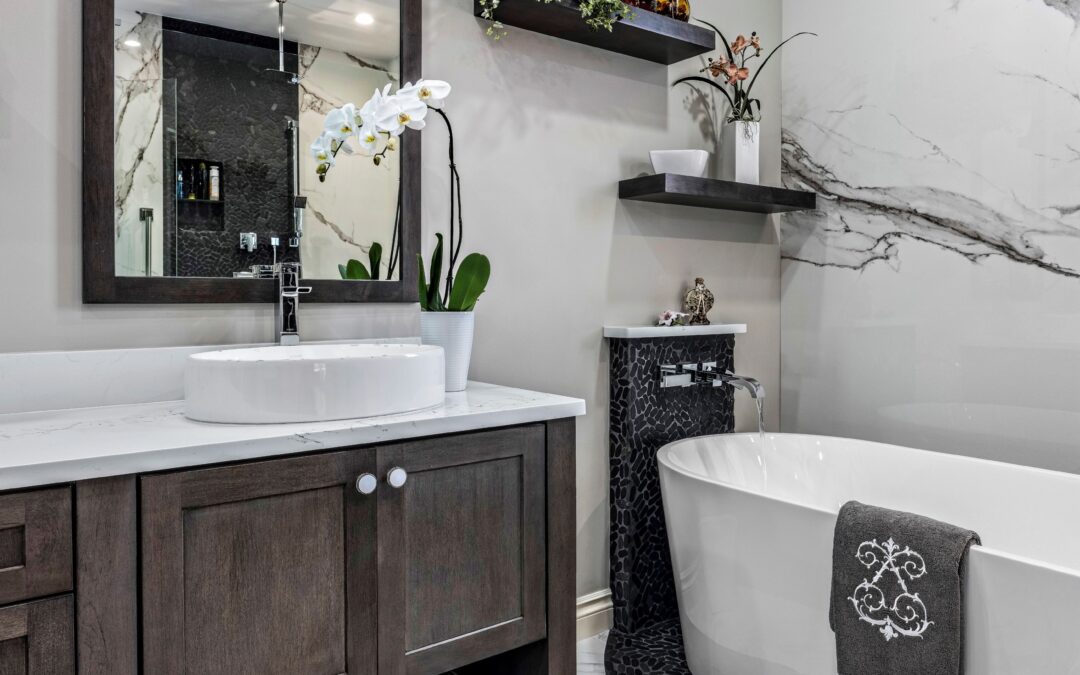Remodeling a bathroom can be an exciting and transformative project for any homeowner. Whether you’re looking to update the fixtures, create a more functional space, or simply enhance the overall aesthetic appeal, a bathroom remodel can breathe new life into one of the most essential rooms in your home. However, one common question that arises when undertaking such a project is, “How long does a bathroom remodel take?” While the answer to this question can vary depending on several factors, let’s explore the typical timeline for a bathroom remodel.
- Planning and Design Phase: Before any construction work begins, it’s crucial to spend an ample amount of time planning and designing your bathroom remodel. This phase involves brainstorming ideas, creating a budget, consulting with professionals, and finalizing the design concept. The duration of this phase largely depends on the complexity of your project and how quickly decisions are made. On average, it can take anywhere from a few weeks to a couple of months to complete the planning and design phase.
- Obtaining Permits: If your bathroom remodel involves significant structural changes or electrical and plumbing alterations, you may need to obtain permits from the local authorities. The process of obtaining permits can take a few weeks, as it involves submitting plans, waiting for approvals, and paying the necessary fees. It’s essential to factor in this time when estimating the overall timeline for your bathroom remodel.
- Demolition and Preparation: Once all the necessary permits are in place, the actual construction work can begin. The first step is usually the demolition of the existing bathroom fixtures and surfaces. This process involves removing old tiles, cabinets, plumbing fixtures, and any other elements that need replacing. Depending on the size of your bathroom and the complexity of the demolition work, this phase typically takes a few days to a week.
- Plumbing and Electrical Work: After the demolition is complete, the next step is to address any plumbing and electrical requirements. This may include repositioning or installing new pipes, drains, and water supply lines. Similarly, electrical work may involve rewiring, installing new lighting fixtures, or adding outlets. The duration of this phase depends on the extent of the changes and can take a few days to a couple of weeks.
- Installation of Fixtures and Surfaces: Once the plumbing and electrical work are finished, it’s time to install the new fixtures and surfaces. This includes putting in new cabinets, countertops, flooring, tiles, bathtubs, showers, toilets, and sinks. The timeline for this phase varies depending on the complexity of the design, the availability of materials, and the number of fixtures being installed. On average, it can take anywhere from a week to several weeks to complete the installation process.
- Finishing Touches and Cleanup: With the major components of the bathroom remodel in place, the final step involves adding the finishing touches. This may include painting the walls, installing mirrors, adding accessories, and ensuring everything is properly sealed and functioning. Additionally, a thorough cleanup of the construction debris and dust is necessary to bring the project to completion. The duration of this phase depends on the size of your bathroom and the level of detail required, usually taking a few days to a week.
- Final Inspection: Once the remodel is finished, it’s important to have a final inspection to ensure that everything meets the required standards and regulations. This inspection may be conducted by a building inspector or a professional contractor. The duration of this step varies depending on the availability of inspectors and the complexity of the project.
In summary, a bathroom remodel can take anywhere from a few weeks to several months, depending on various factors such as the scope of the project, the availability of materials and contractors, and any unforeseen challenges that may arise during the process. It’s crucial to allow for some flexibility in your timeline and work closely with your contractor to set realistic expectations. By planning ahead, being well-prepared, and maintaining effective communication, you can ensure a smoother and more efficient bathroom remodeling experience.


